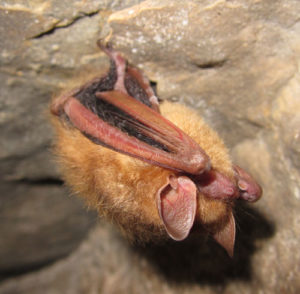Bats are a model organism when talking about themes surrounding this year’s Earth Day—conservation and advocacy for science in general.
Why? Because bats are universal. On every continent (except Antarctica) bats make up 1,300 of the world’s mammalian species, which is a huge chunk of the earth’s biodiversity. On every continent (except Antarctica) bats provide necessary environmental services—they’re pollinators, seed dispersers, pest managers. They save the US an estimated 3.7 billion dollars in pest management every year. In addition, they’re fascinating for other scientific reasons. Their mechanisms for flight are studied for future human flight technologies; their echolocation abilities inspire submarine sonar abilities.
Some people have different attitudes towards bats — they may cringe at the mention or their eyes glaze over as they recount stories of watching bats fly around their yards. Perhaps these people that cringe just don’t have enough knowledge about these animals. That’s a way that bats can serve as a model organism for outreach and education. People care about what they understand. We can try to help them understand.
Bats are ideal examples of champions of the Environmental Species Act. Before the onset of White Nose Syndrome, some bats that were protected under the ESA were considered for de-listing. Their populations had made reasonable recoveries due to protections of their habitats.

A tri-colored bat overwintering in an Illinois hibernaculum, Februay 2014. Although there is no obvious fungs on its face, there is some fungal growth on its legs – this bat is probably positive for white nose syndrome. Photo by Steve Taylor.
Bats in the United States are now facing a conservation issue that many other organisms are facing—the devastation from a nonnative species. Many species are in trouble (the emerald ash borer is killing ash trees; the hemlock wooly adelgid killing hemlocks; chytrid fungus killing frogs, chronic wasting disease killing deer, elk and moose). In this case, it is cave-hibernating bats, which are especially susceptible to White Nose Syndrome, caused by a nonnative fungus.
While bats are facing many threats (habitat loss, wind turbine fatalities, White nose Syndrome, and other threats throughout the world), we can embrace the fact that because they are important on every continent (except Antarctica) they can serve as a model to bring us all together for the common cause—protecting ourselves and the planet we all live on.

